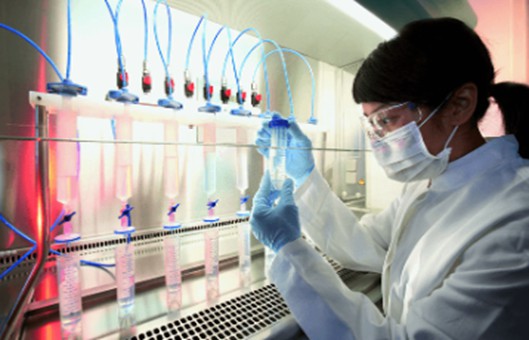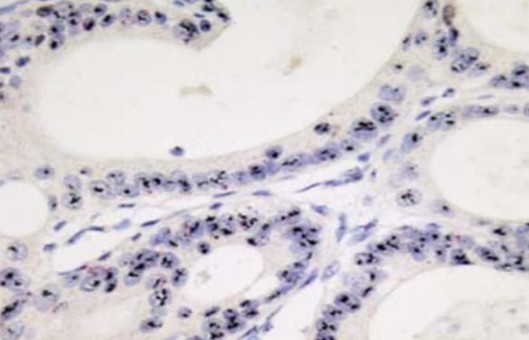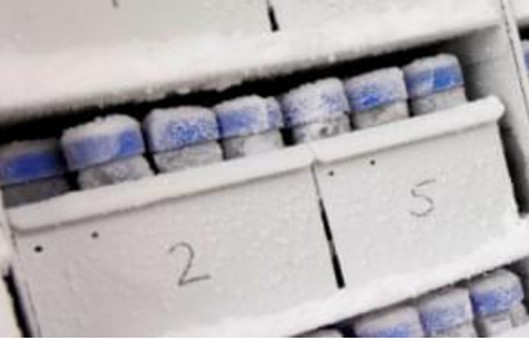Flow Cytometry Staining Protocol of Mouse Neural Stem Cells
GUIDELINE
- Cultured cells or tissue samples are made into single-cell suspension, and then cells are incubated in a flow tube or EP tube with fluorescence-labeled or unlabeled antibodies (It depends on the antibody).
- There are several ways of incubation, such as ice incubation, normal temperature incubation, and 37°C incubation. The cells are then analyzed by flow cytometry.
METHODS
Direct staining
With direct staining, cells are incubated with antibodies directly bound to a fluorescent dye, such as a FITC label. It has the advantage of requiring only one step of antibody incubation, thus it eliminates the possibility of non-specific binding from secondary antibodies.
-
Browse our recommendations
The discovery and utilization of fluorescence have significantly impacted biological and biomedical research. We offer a wide range of fluorescent dyes, including but not limited to the products in the table below.
| Product Types | Description | Recommended Products |
| Fluorescent Labeling Dyes | Fluorescent labeling dyes are commonly used in protein binding or localization studies. These dyes can be incorporated at several positions of peptide chains. | FITC, 5-TRITC , 6-TRITC, SRB sulfonyl chloride, Sulforhodamine 101 sulfonyl chloride… |
| Fluorescent Cellular Stains | Cellular stains enable visualization of subcellular structures and viable cell tracking. Visualization of a living cell with fluorescent dyes offers a large amount of information for the analysis of cell functions. | Hoechst 33258, Calcein AM, Fluorescein diacetate CFDA, CFDA, SE… |
Indirect staining
- During indirect staining, the non-fluorescent primary antibody identifies the target molecule, while the fluorescent secondary antibody identifies the primary antibody, to achieve the purpose of detecting the target molecule. Alternatively, an avidin-biotin system can be used. The antibody binds biotin and is detected by a fluorescent dye-labeled with avidin.
- Cells are isolated from the subventricular zone (SVZ) of adult human glial fibrillary acid protein-enhanced Green Fluorescent Protein (hGFAP-eGFP) transgenic mice.
- Add 200 μL of 1% (wt/vol) sodium azide solution (final concentration 0.02%, wt/vol) and 1 mL of FBS (final concentration 10%, vol/vol) to 10 mL of PBS.
- The supernatant is sucked out and the precipitate is re-suspended in the staining solution. The hGFAP-eGFP cell suspension is distributed into three tubes. The cells are stained with antibodies, ligands, and allotype controls.
- For tube 1, hGFAP-eGFP mouse cells are stained with CD133-PE (1:100) and EGF-Alexa Fluor 647 (1:100) in the staining solution. For tube 2, hGFAP-eGFP cells are stained with rat IgG1 K isotype control PE (1:100) in the staining solution. For tube 3, cells from wild-type (WT) mice are added to a staining solution lacking PI and any antibodies or fluorescent ligands. For tube 4, the hGFAP-eGFP sample is incubated in a staining solution lacking PI and any antibody or fluorescent ligand. Incubate in the dark at 30℃ for 4 minutes.
- After incubation, add 1 mL of staining solution to tubes 1-4 and centrifuge at 130g for 5 minutes at 4°C. Aspirate supernatants carefully and wash the cells with 1 mL of staining solution.
- Aspirate supernatants and resuspend in 500 μL of staining solution. Transfer all samples through a cell strainer (70 μm) (to avoid clumps of cells, which may have formed) to FACS tubes and protect them from light.
- Immediately before FACS analysis, add PI to tube 4 (1:1,000; final concentration, 1 μg·mL−1) and incubate it for 10 minutes at 4°C to determine the proportion of dying cells.
NOTES
- As far as possible, single-cell suspension is made to reduce cell adhesion and keep cells active as much as possible, so that non-specific staining could be reduced and follow-up experiments could be carried out.
- Time of incubation should not be too long or too short: If it is too long, the non-specific staining will increase; If it is too short, the staining will be insufficient, and the fluorescence will be too weak, which will affect the flow.
- If more than two kinds of molecules are to be dyed, the fluorescence of the antibody band should not be the same, otherwise it is impossible to distinguish the two kinds of molecules after up-flow.
- When selecting fluorescence, try to choose two kinds of fluorescence that cross-color and compensate for easy adjustment. For example, FITC and APC can be used together, and APC and PE can also be used together.
- The compensation and voltage are adjusted comfortably.
- Note the temperature at which the antibody is used and stored at 4°C or 37°C.


